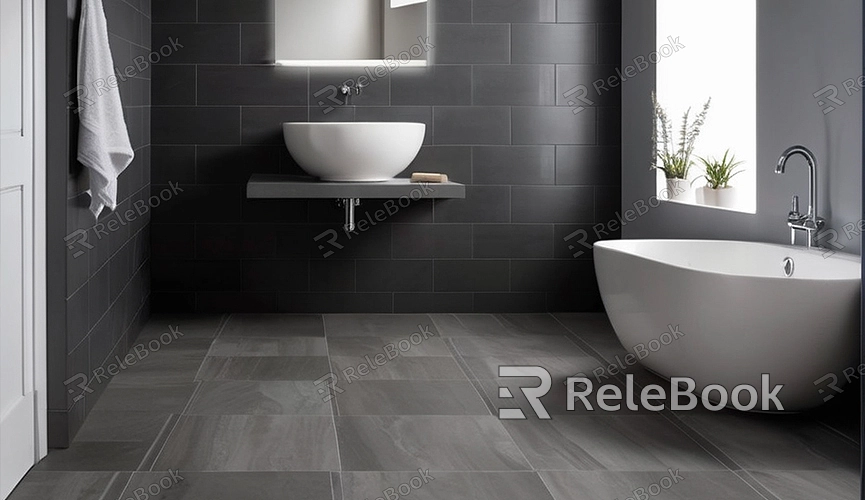Gray Ceramic Tiles Texture in Blender
What are Gray Ceramic Tiles? Gray ceramic tiles are a common design element often used for wall or floor decoration, featuring neutral tones and a minimalist appearance. In Blender, specific textures can be utilized to simulate the appearance and texture of gray ceramic tiles.
These 3D texture resources, downloadable from Relebook, can be applied in Blender as follows:
1. Texture Import: Import the texture materials of gray ceramic tiles into the Blender project.
2. Application to Models: Apply the texture to the surfaces of the models, ensuring the models are ready to accept textures.
3. Mapping Adjustment: Adjust the texture mapping based on the size and shape of the models to achieve a natural effect on the model's surface.
4. Material Parameter Adjustment: Adjust the material parameters of the tiles, such as color, glossiness, etc., to achieve the desired effect.
5. Detail Addition: Add some additional details such as tile texture, glossiness, etc., to enhance the realism and aesthetics of the model.

Different parameter adjustments yield different rendering effects. Here are some common rendering applications of this 3D texture in Blender:
1. Bathroom Decoration: Used to simulate tiles on bathroom walls or floors, adding a clean and refreshing atmosphere to the bathroom.
2. Kitchen Renovation: Suitable for decorating kitchen walls or floors, injecting a simple and modern style into the kitchen.
3. Interior Design: Applied in interior design, such as wall or floor decoration in living rooms, bedrooms, etc., adding comfort to the space.
4. Commercial Space Decoration: Applicable to wall or floor decoration in commercial spaces such as malls, offices, adding a professional and elegant atmosphere to the space.
5. Architectural Exterior: Used to simulate tile decorations on architectural exteriors, adding a modern and distinctive touch to buildings.
In 3D modeling and rendering software like Blender, gray ceramic tile textures are mainly used to simulate the appearance and texture of real-world gray ceramic tiles, providing realistic floor or wall covering effects for 3D scenes. Here's how they function in Blender:
1. Enhancing Scene Realism: By accurately simulating the texture and reflection characteristics of gray ceramic tiles, realism can be added to 3D scenes such as interior design, architectural visualization, or game environments.
2. Visual Aesthetics and Style: Gray ceramic tiles are suitable for various design styles due to their modern, neutral aesthetic. Using gray ceramic tile textures in Blender can help create environments with a minimalist, modern, or industrial style.
3. Diversity of Materials and Textures: Blender allows users to adjust texture details, tones, glossiness, etc., to simulate different types of gray ceramic tile effects, such as stone-like, cement-like, or antique effects.
4. Simulation of Lighting Effects: The material properties of gray ceramic tiles can affect the lighting effects of scenes, such as reflection and absorption of light. Correctly setting these properties in Blender can enhance the lighting effects of scenes, increasing visual impact.
5. Optimizing Rendering Performance: By properly using texture mapping and displacement mapping to simulate tile details, complex visual effects can be achieved without significantly increasing computational burden, optimizing rendering time and resource usage.
The flexible application of gray ceramic tile textures in Blender provides a rich selection of options for 3D model design. By adjusting parameters and applying textures appropriately, various unique tile effects can be added to model rendering, enhancing not only the decorative appeal of the models but also creating more beautiful and comfortable scene elements for designers. If you need high-quality 3D textures and HDRI images, or 3D model downloads, they are available for download from Relebook. After downloading, simply import the textures and 3D models into your project for immediate use.

